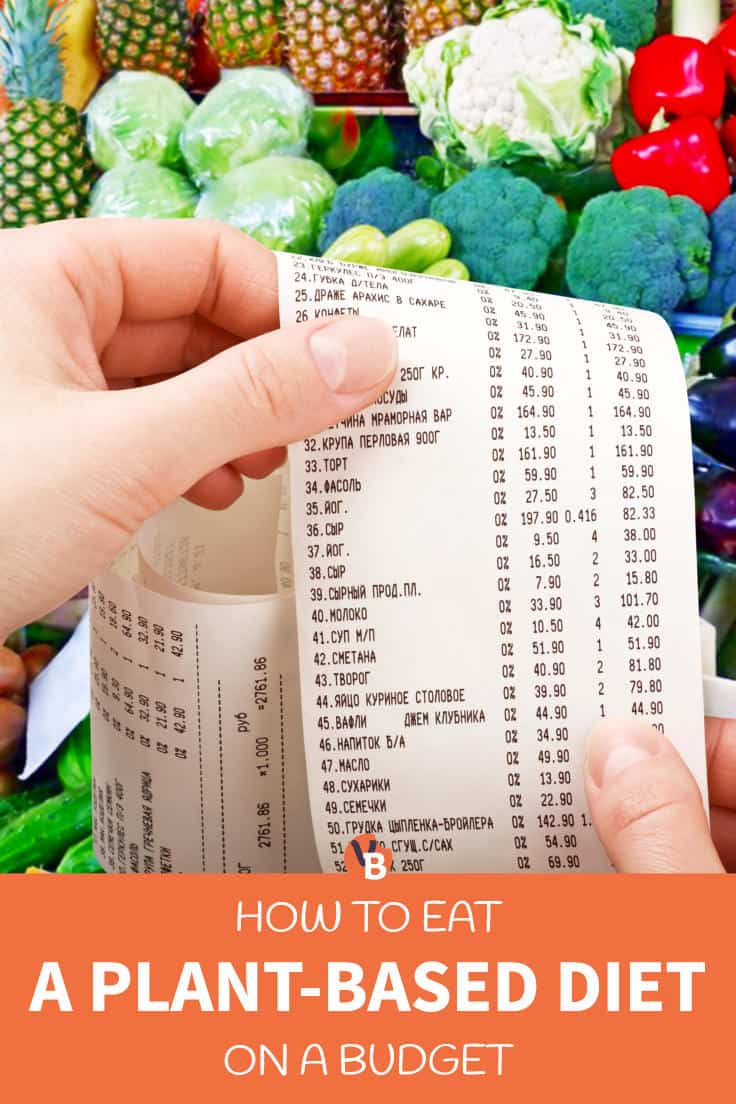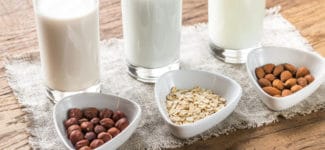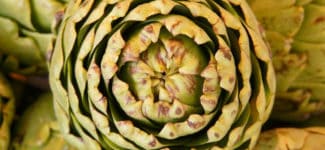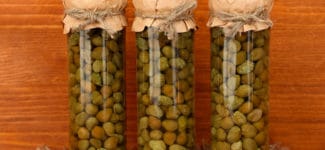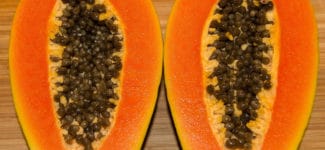The truth is, a whole food, plant-based diet can be one of the most affordable and healthiest ways to eat.
I’m going to share with you everything you need to know about eating plant-based on a budget!
Avoid These Common Mistakes That Make a Plant-Based Diet Expensive
Let’s kick off by covering some mistakes I made in the beginning, which led to higher bills. Watching out for these things will save you a lot in the long run.
Superfoods and Supplements

Some of the most heavily promoted products in the market are also among the most expensive and unnecessary.
Packaged superfoods and most supplements, like protein powders, will immediately spike your grocery bill.
I was so excited to try all the new superfood products that promised perfect health and endless energy.
What I didn’t realize was whole plant foods and a healthy lifestyle would provide everything I need at a fraction of the cost.
With that said, later on we cover a few basic supplements and nutrient-dense plant foods you can incorporate to boost and round out your daily nutrition intake, especially on days where your diet isn’t as “ideal” as you’d like.
Eating Out at Restaurants

I like eating out just as much as the next person, but it can be a fast way to break a budget! What I used to spend in one night at a restaurant could have covered several days’ worth of groceries.
Instead of going out to eat, consider hosting a pot-luck at home for everyone to bring their favorite plant-based dish to share.
Faux Meat and Dairy Substitutes

There have been amazing improvements to faux meat and dairy replacements over the last few years. This has made it easier and more appealing for many people to try out plant-based alternatives.
However, these products can be expensive and will add up fast if you buy them regularly.
While these products can be helpful for transitioning to a plant-based diet, I strongly encourage you to focus on whole plant foods to minimize your grocery bill.
Check out our 101 Vegan Sandwich and Burger Recipes roundup for amazing meatless options.
We also have an extensive guide to non-dairy vegan milk alternatives.
Unprepared Grocery Shopping

As the old saying goes, “if we fail to plan, we plan to fail.” List making has been a big help with keeping me on schedule and on budget!
By creating a list of what I need to pick up, I’m less likely to get side tracked wandering down aisles looking for random items to grab. It also helps me get in and get out of the grocery store more efficiently.
Before heading to the grocery store, browse through our Vegan Recipe Roundups to help plan your meals for the week.
It’ll give you the opportunity to take inventory of what you’ve already got in your cupboards and what you need to pick up.
Shopping on An Empty Stomach

If there was ever a way to ensure unnecessary items find their way into your cart, shopping while hungry would be it!
I can’t tell you how many times I went shopping while hungry and came home with a car full of snacks!
Not only does this increase the odds of buying unhealthy packaged products but it also increases your grocery bill.
Have an apple or two before your next grocery trip and you’ll see how much easier it is to stick to your list.
Don’t Skimp on Your Health to Save a Quick Buck
Let’s face it, the value menu at the nearest drive-through is cheap and convenient. But if long-term health and well-being is your goal, we need to consider the consequences of our food choices more carefully.
Instead of unhealthy, processed foods, there are a variety of affordable plant foods that we can take advantage of to lower our food costs. Rice, beans, legumes, and potatoes are an affordable and healthier way to add bulk to your meals.
That being said, it’s also important to include a wide variety of healthy plant foods that may cost a bit more. Nutrient-dense foods such as leafy green vegetables, fruits, and berries play a major role in minimizing our risk of disease and future healthcare costs.
Think of your health as the most important investment in your retirement portfolio. Investing more in your health today can pay off tenfold later in life.
Round out Your Nutrition Intake with Nutrient Dense Foods and Supplements
While a plant-based diet can provide excellent nutrition, it’s still wise to consider incorporating a few specific nutrient-dense foods and supplements.
Vitamin B12

Whether you’re eating a plant-based diet or not, you may be low in this important nutrient.
Originally, we obtained vitamin B12 from bacteria in our environment—however, personal hygiene, food and water sanitation, and agricultural practices have made it difficult for these bacteria to survive.
Because of this, I believe it’s a good idea to take a supplement.
Personally, I use Garden of Life Mykind Organics B12 spray. A few sprays a week is all it takes to add a little insurance to your future health.
Vitamin D

Another common deficiency that may require supplementation is vitamin D. This is actually a hormone the body produces when our skin is exposed to direct sunlight. Some potential causes of a vitamin D deficiency can be:
- Inadequate sun exposure
- The use of sunscreen
- Having naturally dark skin
- Obesity
- Pharmaceutical drug use
- Liver and kidney disorders
- Geographic location
Adequate exposure to sunlight is the best and safest source of vitamin D. Twenty minutes of sunshine daily with over 40% of skin exposed is what we should aim for to prevent deficiency.
If a supplement is needed, there are several vegan-friendly D3 supplements on the market today.
Requesting a blood test to determine vitamin D levels should be done prior to supplementation. It’s possible to get too much vitamin D when taking supplements, which can be toxic.
Consult with your health care provider before making any changes to your diet or supplement regimen.
In addition to these baseline supplements, there are a few other nutrient-dense foods and supplements that can help round out your nutrient intake:
Edible Seaweeds / Sea Vegetables

Adding small amounts of sea vegetables to your diet is a great way to get some of those hard to find nutrients, like iodine. Some of my favorite sea vegetables are dulse, nori, wakame, and kelp.
Just a bit of these nutrient-dense superfoods in a soup or salad can provide a daily dose of important vitamins and minerals.
Maca Root
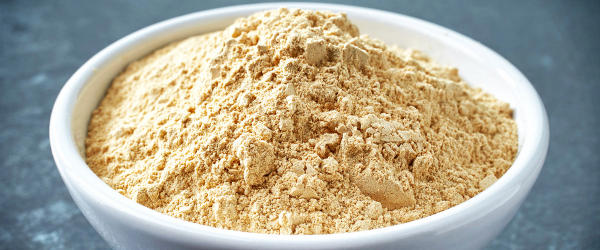
Maca root is a cruciferous root vegetable that grows at high elevations in central Peru.
This nutrient-dense vegetable offers a wide range of vitamins and minerals, like zinc and selenium.
Maca is known for its energizing properties and supporting healthy hormone levels, immune function and strong bones.
Moringa Oleifera
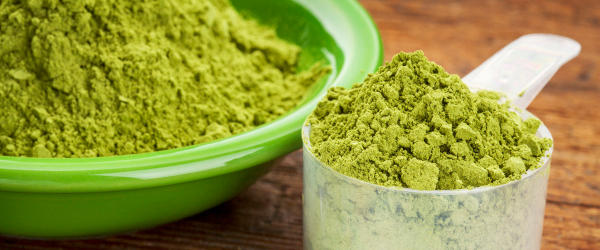
Native to tropical climates, the moringa tree produces edible, nutrient-dense leaves enjoyed around the world.
Moringa has been given the nicknames of “vitamin tree” and “miracle tree” due to its excellent nutrient profile and ability to grow easily in various climates. This is one of my favorite green powders to use in smoothies.
Barley Grass Juice or Powder

Grasses are known for their high mineral content, which can be lacking in modern agriculture. Barley grass can be consumed in juice or powder form.
Either form can be added to the diet to provide a wide range of vitamins and minerals, such as magnesium, iron and copper.
Wheatgrass Juice or Powder
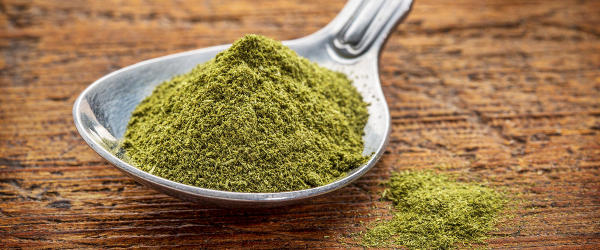
Another popular nutrient-dense grass is wheatgrass. Like barley grass, its high antioxidant, vitamin, and mineral content make it a great supplement to the diet.
Many don’t like wheatgrass due to its strong grassy taste. For this reason, it can be added to other juices, like celery, cucumber, and apple juice.
Final Notes
Consider experimenting with one or more of these nutrient-dense foods in your diet.
The intention isn’t to simply save money while your health takes a backseat, otherwise we could just tell you to eat cheap rice, pasta and beans all day long, and call it a day.
Instead, as is practical and possible, you should aim to bridge the best of both worlds.
If you’re on medications or have a medical condition, always consult with your health care specialist when making dietary or lifestyle changes.
16 Tips for Eating a Plant-Based Diet on a Budget
Now we’ve covered some of the basics, let’s get down to the practical steps you can start taking to make this lifestyle work.
As with any diet, there are many ways to cut costs without sacrificing quality or satisfaction.
Let’s go over 16 ways to save you time and money while eating delicious plant-based meals!
Cook Your Own Food Instead of Eating Out
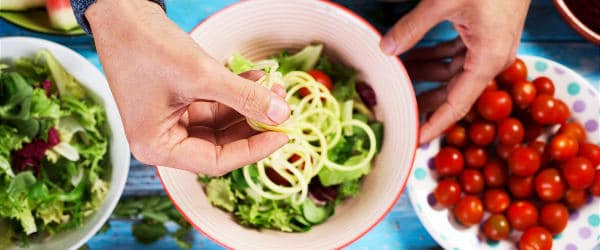
I’m sure you already know it can be expensive to eat out on a regular basis. But you may be surprised at just how much you can save.
According to an analysis done by Priceonomics, eating out can cost up to five times the amount of cooking from scratch!
If you’re already making a lot of meals at home, it’s worth knowing that plant-based meals are substantially more affordable than those including animal foods.
A study published in the Journal of Hunger & Environmental Nutrition, found that making plant-based meals at home could save you nearly $750 a year!
When you’re on a budget, focusing your meals around whole food ingredients, like healthy starches, vegetables, and fruits, is the best way to meet your health and budget needs.
Have a Meal Plan Ready: Save Time and Money by Planning Ahead

Whether you’re a soccer mom or a bachelor, coming up with a meal plan can save you time and money. An effective meal plan will make your life much easier and reduce the amount of food going to waste.
Two popular approaches to meal planning are to select your meals in three-day or seven-day increments. Let’s go over some highlights of each method:
Three-Day Approach
Smaller Grocery Bills per Trip:
Since you’re only buying food for the next three days, you’ll have smaller bills per trip. This works well for some.
For others, this can lead to a larger overall monthly total, so it’s important to pay attention to your purchasing habits.
More Grocery Trips:
If you don’t mind making two or three trips to the grocery store per week, this could be the method for you.
Less Food Waste:
Buying a lot of food at one time can result in more spoiled and wasted food. It’s like throwing money in the garbage!
Buying just what’s needed for the next three days makes it easier to eat everything before it goes bad.
More Flexibility:
Some people find committing to seven days of meals is too much. Planning for the next three days allows you to eat more in-line with your current desires.
Seven-Day Approach
Less Trips to the Store:
This method is usually better for people that lead fast-paced lives. Getting everything in one trip allows you more time to get other things accomplished.
More Peace of Mind:
Knowing what’s on the menu for the whole week can be less stressful for some people. If you’ve got a lot going on, seven-day meal planning might be the way to go.
Fewer Temptations:
Less trips to the store mean fewer opportunities to buy luxury items we don’t need. I know how easy it is to justify picking something up I didn’t need because it was on sale.
But when we’re on a budget, these are the purchases that can hurt us in the long run.
Lower Transportation Costs:
If you drive to get your groceries, you’ll also spend less money on gas. And when you factor in the wear and tear on your vehicle, oil changes, and other costs, this can make a difference.
Avoid Highly Processed Foods and Stick with Whole Foods
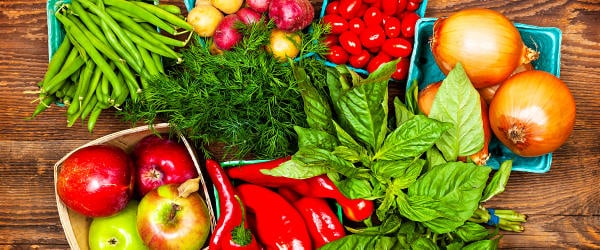
If you’re looking for long-term health, sticking to whole foods is essential. Even plant-based processed foods can be loaded with preservatives, oils, and synthetic ingredients worth avoiding.
One reason plants are so beneficial is their fiber and water content. When the stomach fills up with fiber and water, our brain gets the signal that we should stop eating.
This promotes healthy weight management, improves digestion and elimination, and ends the constant cravings.
Processed foods typically don’t contain fiber or water. Instead, they contain ingredients that make us want to overeat, even after consuming a large number of calories.
Food companies have mastered the art of creating addictive food products, showing little concern for customer health.
The good news is healthy plant-based foods also taste amazing!
If you’re looking for food inspiration to support your weight loss goals, also check out these superb vegan weight loss cookbooks.
You Don’t Have to Buy Everything Organic
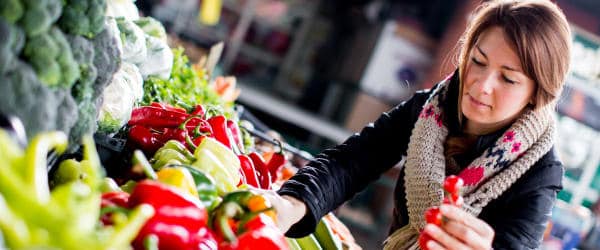
Limiting our exposure to pesticides is always a great idea. However, if you don’t have the means to get everything organic, don’t let this hold you back from buying a variety of healthy plant foods—organic or not!
The amount and type of pesticides used can vary between different fruits and vegetables.
A great resource to use is the Environmental Working Group’s annual report of the most sprayed vs. the least sprayed produce available. The “cleanest” produce should have lower amounts of chemicals, even if they are not organic.
The cost of organic produce can make it difficult to stay within a budget, so taking advantage of the “clean” non-organic produce can be a big help.
Below are some additional tips I have found helpful for finding minimally sprayed produce while keeping the costs down:
Shop at Your Local Farmers’ Markets
Shopping at farmers’ markets is a great way to save money on high quality produce.
Many farmers grow organically, but don’t want to spend the money to get the USDA Organic Seal certification. This saves you and the farmer money!
Get to Know the Produce Workers at Your Grocery Store
Building a relationship with the produce workers where you shop can pay off big time.
Many times, you can work out deals with them to hold slightly damaged or imperfect looking produce for you at a discounted price.
Grow Your Own
Growing your own organic produce is not as difficult as it might sound. It’s easy to grow sprouts and herbs right in your kitchen. More information on this later in the article!
Avoid Mock Meats and Plant-Based Analogue Products

Like other processed foods, mock meat and cheese products often contain a host of preservatives, low-quality oils, and other synthetic ingredients.
When we consume a significant amount of low-quality processed oils, this can lead to several health issues. All oil is 100% fat and adds a significant number of empty calories to whatever it’s eaten with.
Mock meats can be nice on occasions, but for our best long-term health, avoiding or limiting them is recommended.
Instead, learn how to make your own healthy substitutes out of whole foods or minimally processed ingredients. Here’s a roundup featuring 101 delicious substitute recipes.
Buy Staple Food Items in Bulk
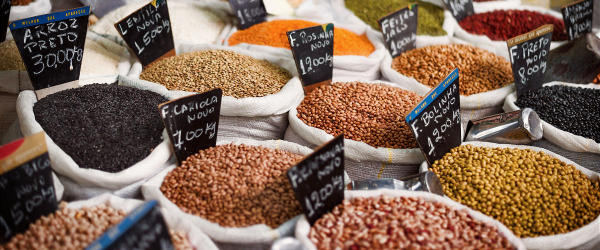
A great way to save money on your food bill is to buy staple foods in bulk. This would include any food you eat on a regular basis that provides a significant portion of your energy needs.
For most people these foods include:
- Bananas
- Beans and legumes
- Dried fruit
- Nuts and seeds
- Whole grains
If you love bananas, many grocery stores will give you a discount for buying by the case. Use them in smoothies, oatmeal, cereal, on their own, or freeze some for banana nice-cream like in this video:
Items such as beans, peas, and lentils can be purchased canned or dry. Canned options save you time, while buying them dry will save you more money. You’ll have to determine which option is best for you.
If affordability permits, gluten-free ancient grains, pseudocereals, and tubers can be used in place of gluten-containing grains.
Gluten-free ancient grains and pseudocereals may need to be ordered online. Great places to order include:
If you’re new these foods, I’d suggest ordering a small bag at first to try them out. If you enjoy them, then go with the bulk size for future purchases.
Depending on how much you eat, you should only have to buy a bulk size bag ever 1-2 months. How convenient is that!?
In case you’re not familiar with the many options available, here’s a list of what you could try:
Gluten-Free Ancient Grains and Pseudocereals
- Amaranth
- Buckwheat
- Chia seed
- Kaniwa
- Millet
- Sorghum
- Teff
- Quinoa
- Wild rice
Recommended Starches and Tubers
- Beets
- Butternut squash
- Carrots
- Cassava
- Celeriac
- Jicama
- Kohlrabi
- Lotus root
- Parsnip
- Plantain
- Pumpkin
- Rutabaga
- Spaghetti and winter squash
- Sweet potato
- Taro root
- Turnips
- Yams
If you find that you still prefer regular modern rice over the ancient grains, it may suite you best to go with white rice instead of brown rice. For many people, especially athletes, white rice digests better than brown rice.
Overall, buying in bulk can be more expensive in up-front costs, but will save you money in the long-run.
If you don’t think you can manage the initial cost, look for—or even start—a local bulk food buying group or club to split the cost with others.
Buy Food Items in Season to Get the Most Bang for Your Buck
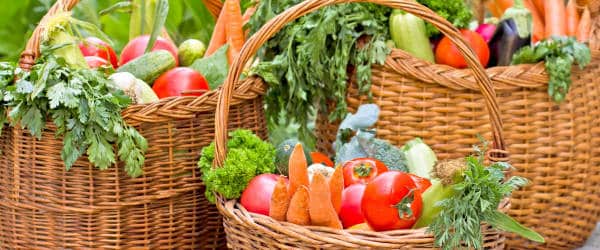
You may notice how much the price of certain foods can change throughout the year. One reason for this will be the time of year or season it is.
Every food has its season and learning when your favorite fruits and vegetables grow can save you money.
Check out the following websites for more information on growing seasons:
Buying fruits and vegetables in season can also mean getting fresher, more nutritious food. This is especially true when it’s locally grown.
Soon after a fruit or vegetable is picked, it begins to break down and lose nutrients.
So, the longer a food must travel to get on your plate, the less nutrition it will have when you eat it.
The three main elements that will cause your fruits and veggies to spoil faster are heat, light, and oxygen. To keep your produce as fresh as possible until you’re ready to eat it, consider the following:
Don’t Cut Your Fruits or Vegetables until You’re Ready to Eat Them
Once you start cutting into your produce, you expose the cells of the plant to oxygen. This causes oxidation and nutrient loss to your food.
Keep Your Fruits and Vegetable in a Cool Dark Place
Direct sunlight and heat will speed up the oxidation of your fruits and vegetables. Keeping them in a cool dark place or refrigerator will keep your produce fresher for longer.
Use Citrus as a Preservative for Leftovers
If you have leftover food to store, squirt a wedge of lemon or lime juice over it. Antioxidants in the citrus act as a natural preservative and will slow down oxidation of your leftovers. Then store it in an airtight container in the fridge.
Make Sure to Check out the Frozen Section
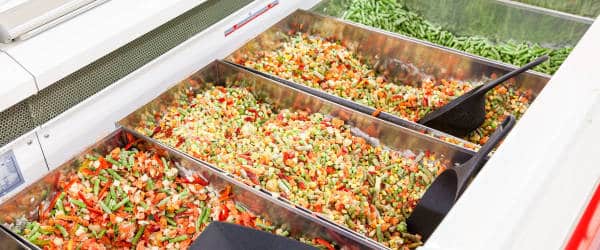
Since most of us don’t live in the tropics, it can be hard to find fresh local produce year-round. That’s where frozen fruits and vegetables come in handy.
Taking advantage of frozen produce gives us access to a wider variety of fruits and vegetables year-round. In many cases frozen options will be less expensive than their fresh counterparts.
Some frozen fruits and vegetables may even be more nutritious than what you pick up in the fresh section.
Fresh produce is usually picked unripe to allow for easier transportation and less spoilage. Produce grown to be frozen will often be allowed to fully ripen before it’s picked.
Wholesale stores, like Costco, offer a wide selection of frozen produce at a great price. If you don’t have a wholesale store near you, look for sales at your local grocery store on frozen produce.
Having a good mix of fresh and frozen fruits and vegetables give us the variety and nutrition we need to be successful on a plant-based diet.
Shop at Different Places for the Best Deals

We all have our favorite grocery stores to shop at. However, limiting ourselves to one store can be a big mistake when it comes to saving money.
If you’re fortunate enough to have multiple grocery stores in your area, you can make significant savings on your grocery bill.
Stores are always competing for our business, so they’ll each be running sales on different items to catch our attention. That’s good news for us!
On grocery day, I find myself stopping at three or four different stores to find the best deals.
Each one has something of better quality and price than the others, and I take full advantage of them all. This allows me to get the best tasting produce at the cheapest prices.
You might think it will take a lot of time to do this, but once you get a routine established, it can be done very efficiently.
Stock up on Sale Items
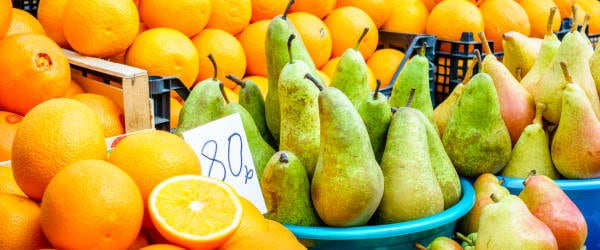
Once you’ve decided which stores you’ll be getting groceries at, find out what sales they have going on. This is the time you want to stock up on those staple items.
Canned, dry, and frozen foods are great for stocking up on when they go on sale. These items can be stored for long periods of time without losing nutrition or flavor.
It’s best to stock up on items that you frequently use. It’s easy to get excited about a good deal and stock up on something you only use here and there.
This can lead to spoiled food and wasted money when we don’t go through these items fast enough.
Shop Online for Produce and Good Deals

If our local grocery stores don’t carry what we want, there is always the internet!
More and more people are starting to order some or all their groceries online. There are many farms and companies that’ll ship fresh produce right to your door.
Dried and canned foods like fruit, nuts, seeds, grains, pseudocereals, and legumes are also widely available online.
Depending on the size of your order, you may even qualify for free shipping with some sites.
I don’t buy a lot of my groceries online, but the items that I do have been great. I end up saving money and getting high quality produce that I couldn’t find locally.
There are many sites that are offering food delivery services but here are a few to get you started:
Many grocery stores are starting to see the importance of offering online orders as well. Check with your local grocery stores and see if they offer online ordering and delivery.
Use Deals and Discount Flyer Apps

You can also find great savings opportunities by using grocery deals applications and websites on your smart phone or computer.
These tools make it easy to find discounts, coupons, and compare prices at all your favorite in-store and online merchants.
Below are four helpful apps or websites that can help you save time and money on your next grocery trip:
Basket Savings
This app uses crowd-sourcing to share real-time prices on your favorite products. Create a shopping list using Basket and you’ll be shown which merchants are offering the best prices.
Customize which stores you want to compare and see the price of individual products as well as the total bill at each store. You’ll be kept up-to-date on the latest sales and available coupons.
Flipp
Go green and replace paper ads with Flipp! Now you can see all your favorite retailer’s weekly ads in one place.
Get all the best coupons right from your phone or by printing them out. This app also lets you create a shopping list and compare prices between stores.
MyGroceryDeals
Like the previously mentioned apps, this is a great website to help you locate the best deals for the items on your list.
Make an account to save your preferred stores and even receive email updates when your favorite products go on sale. The search feature makes it easy to find what you need at the best price.
Save-A-Lot
This U.S. based grocery chain is operating smaller stores so they can offer bigger savings. They use mainly private label brands and limit their inventory, which means lower prices.
Geared to support the economically challenged demographic, Save-A-Lot offers quality products at lower prices.
Grow Your Own Produce
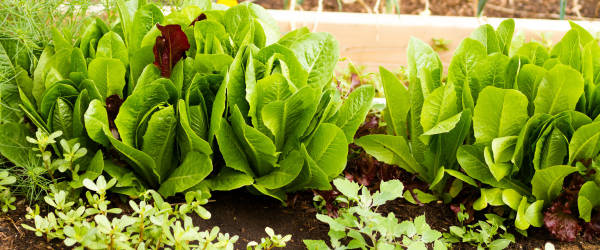
There are so many benefits to growing your own food. Home-grown produce is nutritious, flavorful, and it can save you a lot of money in the long-run.
Even if you don’t have space for a garden, you can start with a few containers of herbs or sprouts right on your countertop.
Sprouts, microgreens and herbs are some of the easiest foods to grow, even for beginners. I’ll briefly cover each of these options and how you can start growing yours!
Sprouts
Sprouts are the young offshoots of germinated seeds. All plants start off as sprouts when they first begin to grow.
During this time, they greatly increase their enzyme and nutritional content. After three to seven days of growth, most sprouted seeds will be ready to consume.
Some of the most common seeds to sprout are alfalfa, broccoli, radish, and clover. I find this to be the easiest option for beginners, as you only need a jar and some water to sprout your seeds.
I love how fresh and flavorful homegrown sprouts are. They go great in soups, salad, wraps, and sandwiches.
To learn more about how to grow your own sprouts, check out my How to Grow Sprouts tutorial:
And for even more savings, you can learn to make your own sprouting jars:
Microgreens
Microgreens are similar to sprouts, but they’re grown in soil and take one to two weeks before being ready to consume. Common microgreens include sunflower, kale, arugula, watercress, beet, and radish.
When ready to harvest, cut them just above the soil with a scissors or knife. They’re best used immediately after cutting but can be stored in the fridge for a few days.
Personally, I like to take a small bag of harvested microgreens with me when I travel for a nutritious snack. Like sprouts, they also go great in soup, salad, wraps, and sandwiches.
For more on how to grow your own microgreens, check out this short tutorial:
Herbs
Herbs are leafy green, flowering plants commonly used for flavoring food or medicinal purposes. These plants are commonly grown indoors and don’t take a lot of work to keep healthy.
You may even have several herbs already growing in your yard or neighborhood!
Dandelion, plantain, red clover, purslane, and lamb’s quarters are some common herbs that are mistakenly labeled weeds.
Unfortunately, due to the wide-spread use of pesticides and lawn chemicals, eating wild herbs in your neighborhood may not be a good idea. The next best thing is to grow them yourself!
With a few pots, some soil, and water, you can grow your own healthy herbs to use and enjoy.
For a quick introduction to growing herbs indoors, check out this short video:
Additional resources for learning how to grow your own food, check out the following:
- John Kohler’s Learning Organic Gardening YouTube channel
- The Micro Gardener’s Easy Guide to Growing Microgreens
- The Sprout People – All things sprouts and microgreens
Pick Up a Couple New Spices and Condiments Each Time You Grocery Shop
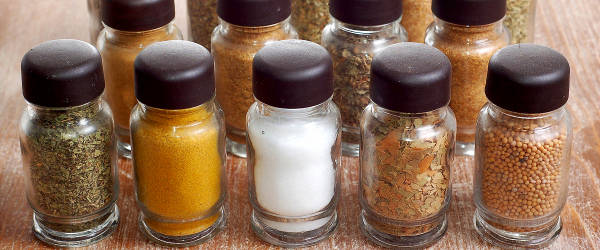
Spices were among the most valuable and sought-after commodities in ancient times. Lucky for us, today they’re easy to find and very affordable.
The great thing about spices is they can completely change the dynamic of your meals. Spices also reduce the need to add salt to your meals, as they enhance the flavor of food naturally.
There are so many great spices we can utilize such as cinnamon, cumin, garlic, ginger, pepper, and more! Besides their great taste, they also add a boost of antioxidants and other healthy nutrients.
Maybe you already have a few random spices in your cupboard right now. That’s great, because the same spices you used in all your old favorite recipes can be used in plant-based recipes, too!
As you continue to get more comfortable with your plant-based diet, start picking up one or two new spices each week you’d like to try in new recipes. This’ll spread the cost out over time as you build up your spice collection.
I always buy organic spices whenever possible. The cost can be slightly more, but you’ll avoid the added pesticides.
Organic spices also avoid potentially harmful sterilization processes such as irradiation and chemical treatments, like ethylene oxide.
Finally, for the spices you end up using the most, you can save money by purchasing them in bulk.
They’ll last in an air tight container for about two to three years.
To purchase herbs in bulk, check your local grocer, co-op, or websites like Mountain Rose Herbs.
Learn How to Batch Cook Your Meals
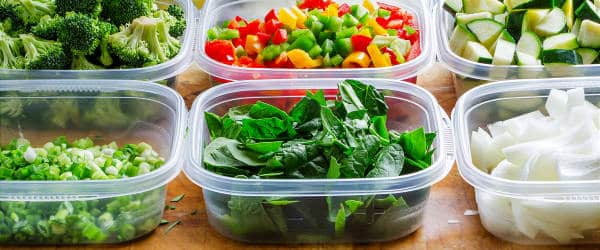
Another time and money saving technique you can use is batch cooking! This means to make large batches of different ingredients to be used throughout the week.
Keep each ingredient in separate containers in the fridge or freezer.
Each day, you’ll use the ingredients to make a variety of your favorite meals!
Below is a list of foods that work well for batch cooking:
- Ancient grains and pseudocereals
- Assorted vegetables
- Beans and legumes
- Pasta
- Squashes
- Tubers
The great thing about preparing your food this way is the amount of time you save. Schedule which day(s) you want to prepare your food.
It’s good to pick the same day each week to help you get in a routine. It may take a little time to prepare everything but once it’s done, you’re all set for the rest of the week.
Use your batch ingredients to make salads, pasta dishes, loaded potatoes, burrito bowls, tacos, stir fry, or anything else you desire.
Batch cooking and meal planning work great together, so pick out a few meal ideas ahead of time to take full advantage of your ingredients.
For additional ideas for batch cooking, check out this short video:
Cook Large Meals to Have Leftovers
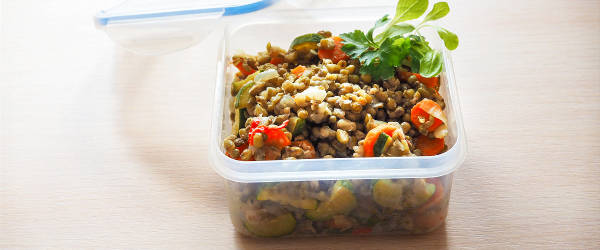
If batch cooking isn’t your thing, another option is simply cooking large meals that’ll provide leftovers. This takes much less coordination than batch cooking but still saves you time and money.
Just having one meal taken care of for the next day can help reduce stress and keep us on our health plan.
And when you’re making healthy and delicious plant-based meals, who wouldn’t be excited for leftovers the next day!?
If the amount of food you have left-over isn’t enough for another full meal, you can always just incorporate it into another dish or eat it as a snack.
I recommend getting some nice air-tight, glass storage containers to keep your leftovers in. I use Pyrex, but any glass storage products will do.
Plastic containers can leach unwanted chemicals into the food, especially if reheated within the container.
Wrapping Up
There you have it! You’re ready to start slashing grocery bills and relaxing with all your new-found free time.
It’ll probably take some practice before you start to see the full benefits from these tips.
But over time, you’ll be spending less time and money on food and more time on what’s important to you.
Making a plant-based diet affordable, practical, and delicious is what it’s all about. If you’re new to plant-based eating, check out these vegan cookbooks for beginners as well as the many recipe roundups we’ve put together for you.
I hope you found the information in this article valuable and would love to hear your thoughts!
Do you have time or money saving tips that I didn’t mention? Let us know in the comments box below!

